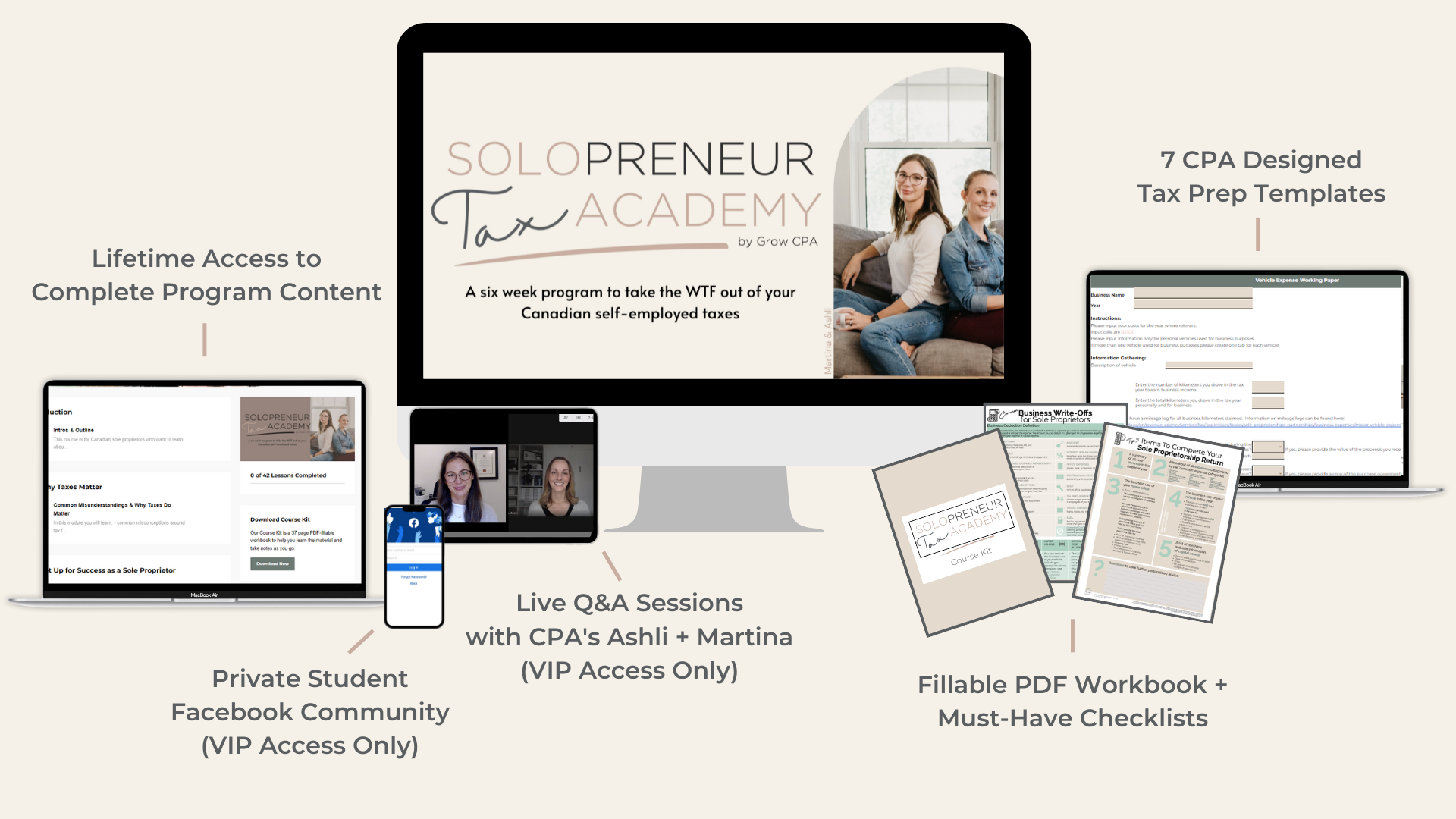How to avoid a surprise tax bill: A 3 step guide for self-employed Canadians

For many business owners, their annual tax bill is a complete surprise. We budget and account for things like rent, operating expenses, salaries, and other common write-offs, but when it comes to taxes, it is often a forgotten cost.
It isn’t until taxes are filed that the realization sinks in that there is an additional cost, that is in a lot of cases, a large amount, that needs to be dealt with, and fast. This quickly leads to undue stress, as it can be difficult to find the extra cash flow needed to fund this “surprise” bill.
So what if you could take that “surprise” factor out of your annual tax bill?
The truth is, saving for taxes is a must. In fact, it may be one of the biggest business expenses you have. The first step to taking the overwhelm out of tax season is to begin treating your annual tax obligation like a regular operating cost. Think of taxes in the same way you think about rent or software, or your own salary. Adding this line item to your monthly budget will not only save you tax-time stress, but it will also give you a true picture of how much money you actually get to keep in your business. Knowing this then allows you to build accurate revenue goals and make educated investment decisions. In short, it’s an item that should be taken into consideration when planning out your annual cash flow and budget projections.
How to save for taxes Step 1: Estimating your taxable income
To have an accurate idea of what your tax bill will be, you will need to estimate your taxable income. Your taxable income is your total taxable revenue minus your total write-offs. Sounds easy, but it can be nearly impossible if you don’t have your bookkeeping up to date. Before you can do any tax planning, the first crucial step is to get a handle on your books. You can do this on your own using a variety of online tools. Check out the one we built.
One more consideration to take into account when making this calculation is whether or not your business is incorporated. If your business is sole proprietorship, you can estimate your taxes with a handy tool we’ll go over below. For those of you out there who are incorporated, we suggest getting in touch with your accountant for some help in figuring out an estimate of what you might owe. If you don’t have an accountant and need some CPA guidance you can book a clarity call with us.
How to save for taxes Step 2: Figuring out how much you will owe
We like using the Wealth Simple personal tax estimator linked below for quick and easy personal tax estimates. Let’s walk through a simple example for a sole proprietor.
Courtney is a coach working in Ontario, Canada. She earns $120,000/ year in revenue. Her eligible business write-offs are about $12,000/ year.
Her estimated revenue - estimated write-offs = estimated taxable income
120,000- 12,000 = 108,000

When we run these numbers using the tax estimator, we can see that Courtney will owe approximately $31,745 dollars in tax. This includes the federal and provincial portions and mandatory CPP contributions. Because Courtney works with her clients on a longer-term basis, she has predictable monthly revenues and has decided to contribute to her tax savings once per week.
$31,745/52= $610.48/ weekly
In order to be prepared come tax time, Courtney decides to have $610.48 automatically transferred from her business chequing account to her business savings account at the same time each week. This ensures she will have the amount she needs come tax time to pay her estimated tax bill.
Here are some helpful resources to help you get started:
Sole proprietor tax calculator
This is a very simple way to estimate your personal taxes but please know that taxes are quite complex. There are a multitude of other factors such as RRSP contributions, employment income, investment income etc. that may impact your tax situation. If you want to get a better idea of what your estimated taxes may be you can also contact your tax preparer.
How to save for taxes Step 3: Setting up your banking and automatic transfers
Next, as we mentioned above, it’s best practice to set-up a dedicated bank account for your tax savings. Leaving the money in your business chequing account makes it very difficult to ensure you have the appropriate amount of savings set aside. Simply put, it can be too easy to spend it. Most financial institutions offer savings accounts with very low, or zero, monthly fees, so there are some great options out there for setting up this account.
We also recommend automating the transfer from your business chequing to your business tax savings account. This is a set it and forget it approach that gets you saving for taxes without lifting a finger. If you are relying on yourself to go into your banking and make the transfer each period you might start out strong but odds are this isn’t going to last long.
We also recommend breaking the savings up into the smallest time periods possible, this is why we like transferring funds weekly. It means that smaller amounts will be transferred each week rather than say a very large transfer each month. This will enable you to better manage your cash flows.
The Bottom Line
Aside from keeping your stress down at tax time, saving for taxes regularly has some powerful benefits. By alleviating the stress of wondering how much money you will owe in April, you can start planning better for business cash flow, RRSP contributions, and future business projects. In other words, you go from winging it and hoping for the best, to taking full control of your business finances. If your next level self is ready to go there, we personally challenge you to stop thinking of taxes as a penalty and start thinking about them as a regular business cost.
If you need help or want a deeper understanding of your sole proprietorship taxes, we cover it in great detail, supported with a helpful template in our signature course - Solopreneur Tax Academy - buy it now!
Interested in learning more from us? Follow along with us through our social media accounts (find us on Instagram @growcpa) and sign up for our newsletter for more educational and fun financial content.
Wishing you success in your business,
- Martina + Ashli
Date published: March 1, 2023
Disclaimer - The information provided in this blog is general in nature and solely for educational purposes. Readers use and implementation of the information comes at their own risk and is their own responsibility.



